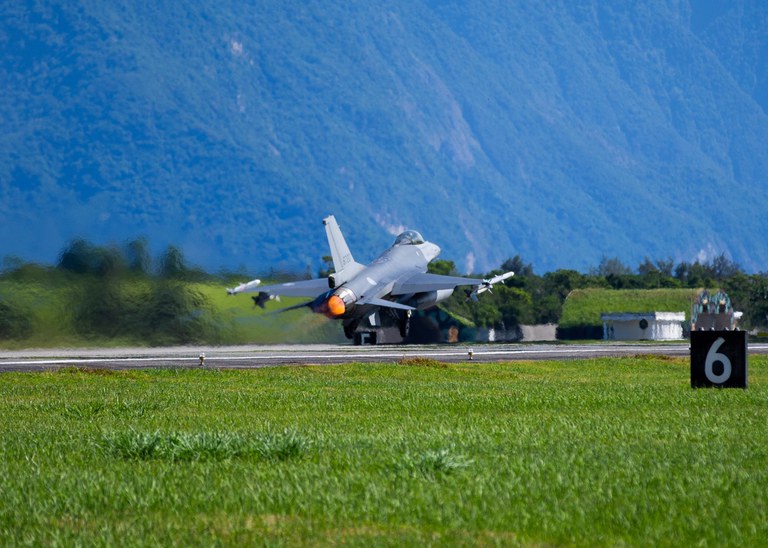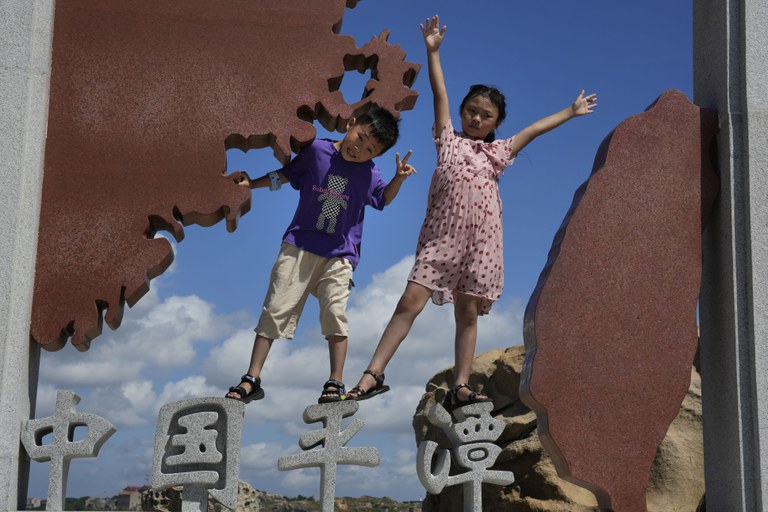China increasingly fears losing international support for its claim that the democratic island of Taiwan and China are part of a “one China” that was split apart during the civil war and is awaiting “unification,” analysts told RFA. The Chinese government on Wednesday released a white paper on Taiwan, reiterating its stance and not withdrawing its ongoing military threat against the island, which has never been ruled by the Chinese Communist Party (CCP) nor formed part of the 73-year-old People’s Republic of China. When the nationalist Kuomintang (KMT) regime of Chiang Kai-shek fled there after losing the civil war to Mao Zedong’s Soviet-backed communists, it took over what had been a dependency of Japan since 1895, when Taiwan’s inhabitants proclaimed a short-lived Republic of Formosa after being ceded to Japan by the Qing Dynasty (1644-1911). Nonetheless, Beijing forces countries to choose between diplomatic recognition of Beijing or Taipei, and has repeatedly threatened to annex the island, should it seek formal statehood as Taiwan. “The white paper … was … released amid the escalating cross-Straits tensions and the People’s Liberation Army (PLA)’s military drills against Taiwan secessionists and foreign interference,” China’s nationalistic tabloid the Global Times reported. It said the white paper’s release is “a warning to Taiwan authorities as well as external forces,” citing “analysts.” “We are one China, and Taiwan is a part of China,” it quoted the white paper as saying. “Taiwan has never been a state; its status as a part of China is unalterable,” the paper said, adding that Beijing is “committed to the historic mission of … complete reunification.” The current Taiwan government still uses the name of the KMT’s 1911 Republic of China, and operates as a sovereign state despite a lack of international diplomatic recognition or participation in global bodies like the World Health Organization (WHO). The recent visit of U.S. House Speaker Nancy Pelosi to the island on Aug. 2-3 was viewed by Beijing as a “serious provocation,” and China’s People’s Liberation Army (PLA) launched a series of military exercises that encroached into waters that were previously regarded as Taiwan’s. This week, Beijing reacted strongly to a statement by U.S. Secretary of State Antony J. Blinken, Australian foreign minister Penny Wong and Japanese foreign minister Hayashi Yoshimasa, in which they appeared to qualify their support for the “one China” policy, which Beijing demands as a prerequisite for diplomatic ties. Children pose for photos at the 68-nautical-mile scenic spot, the closest point in mainland China to the island of Taiwan, in Pingtan in southeastern China’s Fujian Province, Aug. 5, 2022. Credit: AP No change in policy Blinken, Wong and Hayashi condemned China’s launch of ballistic missiles — five of which Japan has said landed in its waters — which they said had raised tensions and destabilized the region. In a joint statement, they called on China to cease its military exercises around Taiwan immediately. “There is no change in the respective one China policies, where applicable, and basic positions on Taiwan of Australia, Japan, or the United States,” the statement concluded. Asked to confirm whether the addition of the words “where applicable” was new for Washington, a State Department spokesperson on Tuesday replied: “I’d just refer you back to the statement.” President Joe Biden has previously said China is ‘flirting with danger’ with its ongoing threat to annex Taiwan, saying the U.S. is committed to defending the island in the event of a Chinese invasion, a statement U.S. officials later framed as an interpretation of the existing terms of the Taiwan Relations Act requiring Washington to ensure the island has the means to defend itself. Chinese foreign minister Wang Wenbin hit out at the joint statement from Washington, Canberra and Tokyo, saying countries shouldn’t add clauses that contextualize their support for the one China policy. “Certain countries have unilaterally added preconditions and provisos to the one-China policy in an attempt to distort, fudge and hollow out their one-China commitment,” Wang told journalists on Tuesday. “This is illegal, null and void … [and] also a challenge to the post-WWII world order.” “Attempts to challenge the one-China principle, international rule of law and the international order are bound to be rejected by the international community and get nowhere,” Wang said. Ding Shufan, an honorary professor at Taiwan’s National Chengchi University, said that, in fact, U.S. policy in Taiwan has always been conditional on the relatively peaceful status quo that has been seen since over recent decades. “It’s possible that [the three countries] were somewhat deliberate in adding this,” Ding said. “[It means] that if the situation in the Taiwan Strait gets out of control, [their support for] the one China policy could change.” Chung Chi-tung, an assistant researcher at the National Defense Security Research Institute, said the military exercises were a form of protest over the deterioration in the U.S.-China relationship begun under the Trump administration, which eventually removed a ban on high-ranking visits to Taiwan by U.S. officials that wasn’t reinstated under President Joe Biden. “Everyone has been looking at the military situation, but they have ignored the fact that the most important thing it shows about China is how worried it is by this setback in relations with the U.S., and by the internationalization of the Taiwan Strait issue,” Chung told RFA. Counterproductive stance He said Beijing has been explicit about this right from the start, mentioning the “hollowing out” of international support for the one China policy. “China wants to put a stop to the internationalization of the Taiwan Strait issue that was caused by Pelosi’s visit,” Chung said. “This is counterproductive, because the focus of global attention is the U.S.’ one China policy, which is in conflict with China’s [formulation of] the principle.” Chung said no other countries made any comment at all during the Taiwan Strait missile crisis of 1995 and 1996, but this time even Southeast Asian nations and members of ASEAN have criticized China’s actions and taken Washington’s side. Chang Meng-jen, convenor of the diplomacy and international…







